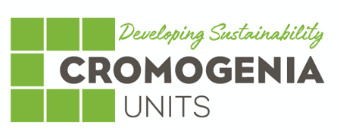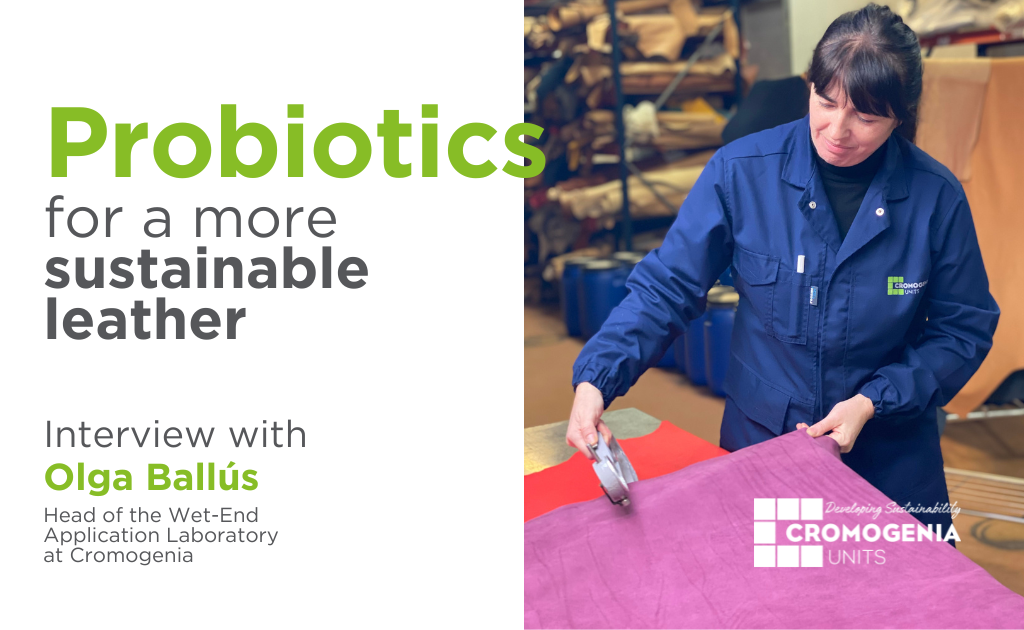Cromogenia Units has developed a line of probiotic products for the leather industry that can radically change the concept of leather treatment and take it to much higher levels in cleaner and more efficient practices.
Combining sustainability, environmental respect, and quality is the main objective of Cromogenia Units’ Tanning Unit. In this section, they have been working for years in this field, and they have developed many sustainable and eco-friendly products and processes to achieve it.
Olga Ballús, Head of the Wet-End Application Laboratory at Cromogenia, explains what the use of probiotics for more sustainable leather entails and how probiotics are transforming the leather industry, offering not only sustainability but also significant improvements in leather quality.
What has been your role in the development of the innovative line of probiotic products?
As part of the team developing the line of probiotic-based biosurfactant products, I am involved in the research, design, and implementation of new formulas and processes aimed at enhancing the effectiveness and sustainability of our tanning products. My responsibility involves constantly exploring innovations in formulation and technology to optimize the performance of our products while committing to environmentally friendly manufacturing practices.
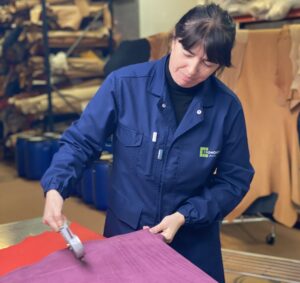
How did the idea of implementing probiotics in leather production come about?
The idea comes from our constant search for more sustainable and environmentally friendly technologies, products, and processes that can reduce the environmental impact associated with traditional tanning methods, while elevating the quality of the end product. We realized that probiotics, known for their benefits in intestinal health and versatility in other industrial sectors, could be an excellent alternative to conventional chemicals used in leather tanning. So, we decided to invest in probiotic products that are 100% natural, biodegradable, and sustainable to transform production.
What are the main benefits that probiotics offer to the leather industry?
Probiotic-based products are bio-origin products that reduce dependence on traditional chemical products, minimizing waste generation during the tanning process, and providing high-quality leather. Probiotic products offer several benefits for the leather tanning process. First, their metabolites, especially biosurfactants, act as humectants, dispersants, and degreasers, improving leather quality and facilitating the tanning process. Additionally, they contribute to reducing effluent loads, promoting sustainability by minimizing environmental impacts. They are biodegradable and biologically sourced, optimizing product usage and reducing costs due to their high efficiency. Probiotic products are natural, biodegradable, and non-toxic, offering a healthy alternative by eliminating the need for traditional chemical products. They can be used in a wide range of pH and temperatures without affecting their performance. They offer effective degreasing or deep soaking, enhancing leather quality depending on the probiotic used. When applied correctly, they can preserve leather by inhibiting bacterial development. In summary, they allow for a cleaner, more efficient, sustainable, and quality process, reducing environmental impact and carbon footprint.
How are biosurfactant products developed?
Our biosurfactant products are developed through a meticulous controlled fermentation process, using probiotic cultures and carefully selected natural raw materials. This process allows us to obtain blends of biochemical products with high stability in the presence of electrolytes, ensuring their effectiveness in various stages of the leather tanning process.
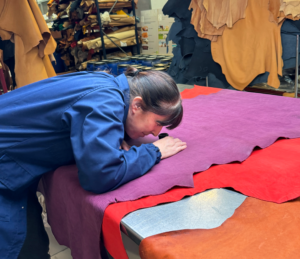
What has been the biggest challenge during the development of this probiotic range for leather?
Creating this range of probiotic products posed a significant challenge due to the novelty and complexity of this technology. We faced the task of formulating these products effectively, which involved a long process of research and development. It was necessary to work closely with experts in microbiology and chemistry to thoroughly understand how these probiotics interact and how they can be optimally applied in the leather tanning process. Numerous laboratory tests were conducted, requiring constant adjustments to achieve the perfect formulation. It was a path full of challenges and learning experiences as we were exploring new and unknown territory in the leather tanning world. Each experiment brought us closer to understanding how to maximize the potential of these probiotic products in terms of effectiveness and sustainability.
What are the specific applications of these biosurfactant products in leather production?
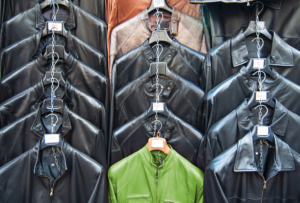 Our biosurfactant products can be used in various stages of the leather production process. They act as humectants, providing deep and uniform hydration in raw and wet blue hides. They also function as dispersants, helping to disperse the chemicals used in the tanning process. Additionally, they act as degreasers, facilitating the degreasing operation of raw hides and skins.
Our biosurfactant products can be used in various stages of the leather production process. They act as humectants, providing deep and uniform hydration in raw and wet blue hides. They also function as dispersants, helping to disperse the chemicals used in the tanning process. Additionally, they act as degreasers, facilitating the degreasing operation of raw hides and skins.
What is Cromogenia Units’ vision regarding the future of leather production and the use of probiotics?
Our vision is to lead the transition towards more sustainable and environmentally friendly solutions in leather production. We believe that probiotics will play a crucial role in this transformation by offering a natural and biodegradable alternative to conventional chemicals. We are convinced that it will have a significant impact on the future of the leather industry, not only in terms of environmental sustainability but also in terms of the extra quality of the final product. We believe that probiotic technology has the potential to transform tanning processes, offering a cleaner and more sustainable alternative to conventional methods. We will continue to be committed to providing efficient and eco-friendly technology to drive the leather industry towards a more sustainable future.
For more information, you can contact us through this form.
